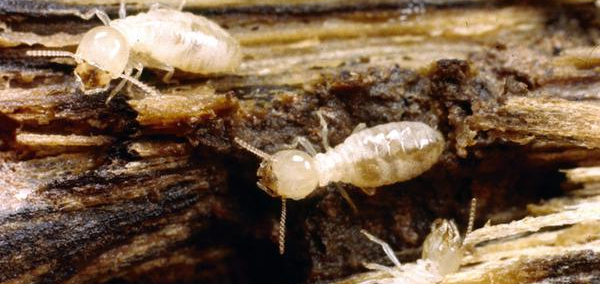Subterranean Termites
Termites are unique insects. Unlike most other insects, they live in large colonies and feed on wood. This ability to consume wood makes them among the most important structural insect pests in the Northwest. There is no question that the thought of thousands of hungry insects consuming the structure of your house is frightening. Fortunately, you can take pesticide-free steps to make sure that your house is not damaged by termites.
Termites or Ants?
If you suspect that you have termites in your house, you’ll need to decide if the insect that’s giving you trouble is a termite. Termites and ants are often confused. Take a careful look at the antennae and waist of your insects. Ants have elbowed antennae and narrow waists while termites have straight antennae and thick waists. Both ants and termites are occasionally winged, but termite wings are unique because the front and the hind wings are the same size.
Which Termite?
Next you’ll need to decide which termite is causing your problem, because managing different termites requires different techniques. Subterranean termites are one of three termites found in the Southern California. They are small, require moist conditions, and nest in or near the soil. They feed in wood that is in contact with soil or construct shelter tubes from soil to above ground wood. The tubes are made of soil mixed with bits of wood or other materials, and are not made by other common termites.
These termites live in the soil and must maintain contact with the ground or some other moisture source to survive. They build earthen tubes from the ground into the structure for protection from predators and to help maintain a moist environment. In some rare situations, if water and wood are available from a source other than the soil, subterranean termites can establish a colony with no ground contact.
Termite Barriers
Sand grains of the correct size (called 16 grit; with a diameter of 0.06 to 0.1 inches) can be used as a termite barrier because termites are unable to dig through or move sand grains of that size. A field test in northern California showed that installing a sand barrier 18 inches wide and 3 inches deep in crawl spaces along the inside of the foundation wall effectively stopped termites. For long-term success, these researchers recommend careful installation of the barrier and regular monitoring. Sand barriers have been used successfully under concrete slabs. They are installed during construction before the slab is poured.

